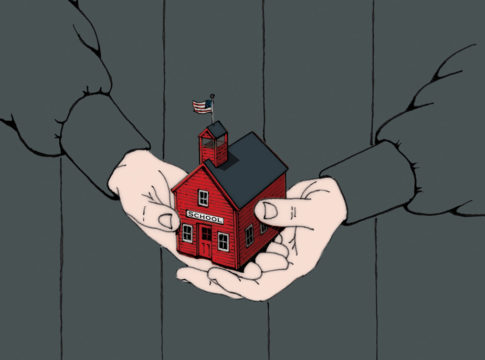In their ideal world, school finance reformers would not rely on state-level lawsuits but would look to a reconstituted U.S. Supreme Court, with a liberal majority, to overturn San Antonio v. Rodriguez, the landmark decision of 1973 that declined to strike down Texas’s system of school finance as a violation of equal protection. Were educational equity to be guaranteed by the U.S. Constitution, a whole new world of litigation would be open to them, and interstate as well as intrastate differences and inadequacies could be attacked in federal courts. In the meantime, legislators and governors in Texas and Kansas face yet another round of lawsuits.
The Texas Constitution’s education clause requires the legislature “to establish and make suitable provision for the support and maintenance of an efficient system of public free schools.” Relying on this meager textual material, school finance lawsuits have reached the Texas supreme court five times, with the last decision coming in 2005. Since then, enterprising attorneys have flooded the lower courts with four separate cases. One of them, Texas Taxpayer and Student Fairness Coalition v. Williams, has already been ruled on by a trial court judge and will almost certainly reach the supreme court. In this case, more than two-thirds of Texas’s 1,032 school districts joined in claiming once again that the state does not adequately fund education.
Following a similar script from cases in other states, the plaintiffs claimed that the state could not increase education standards without also increasing funding. This claim proved to be catnip for trial court judge John Dietz. In a meandering, near stream-of-consciousness statement delivered with his ruling, he talked about the wonders of education and how it is obvious that if the state wants higher standards it has to pay more, because “there is no free lunch.” Resolutely leaving no vapid cliché behind, he went on to expound, “It is a fact that the more educated we are, the greater our income will be. The greater our income as a state, the fewer citizens need public assistance. With greater income, the lower the crime rate.” How education can cure virtually every social ill while not being subject to diminishing marginal utility he doesn’t explain.
In Kansas, in response to a supreme court order, the legislature drastically increased funding in 2006, to no discernible educational effect. But as the economy declined, Kansas had to cut spending, and it included education in the cuts. This prompted a large coalition of school districts, which enroll more than 40 percent of the state’s students, to file suit in 2010 claiming that the decline in state revenue could not justify decreasing spending on education. In January 2013, a three-judge district court panel ruled in Gannon v. State that the legislature’s spending reductions were unconstitutional. As in Texas, the panel called upon weepy clichés. The state, it said, was “experimenting with our children” and depriving them of “opportunities” that “do not repeat themselves.” The panel enjoined the state from providing less than $4,492 in per-pupil aid. The import of this decision is that economic reality can have no effect on budgetary decisions. Presumably, even if Kansas’s total tax revenues were less than this amount, the judges would still demand that the legislature provide it.
In response to this ruling, the state appealed, and Kansas governor Sam Brownback successfully asked the state supreme court to order mediation between the state and the complaining school districts. If mediation fails, the supreme court will hear the case in October.
Most striking about both the Texas and Kansas cases are the broadly encompassing constituencies the plaintiffs represent. If students in two-thirds of the school districts in Texas and 40 percent of the students in Kansas are being deprived of an adequate education, then a political incentive would exist to save them from educational immiseration and protect school spending, even under adverse economic conditions. The histories of the Texas and Kansas supreme courts make us doubt they will resist the treacly rhetoric of the trial courts and return these questions to the legislatures and governors, where they belong. We expect rather that the cases will continue to shuffle abroad in state courts, like the ghoul in a late-night horror show that, in a different context, Justice Scalia said refused to die, even after being repeatedly killed and buried.
Joshua Dunn is associate professor of political science at the University of Colorado–Colorado Springs. Martha Derthick is professor emerita of government at the University of Virginia.
This article appeared in the Fall 2013 issue of Education Next. Suggested citation format:
Dunn, J., and Derthick, M. (2013). More School Dollars! School finance claims shuffle back to life. Education Next, 13(4), 7.





